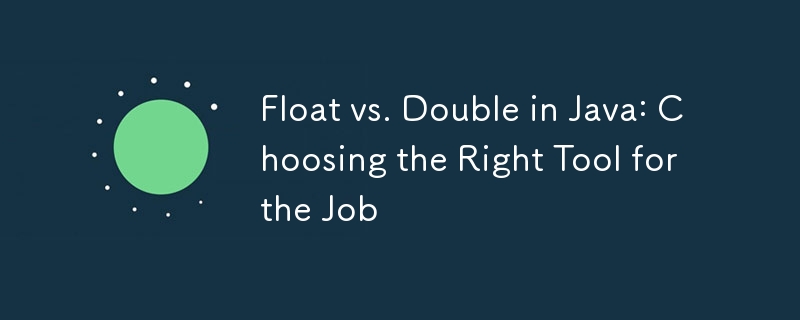

When working with decimal numbers in Java, you have two main options: float and double. While both represent floating-point values, they differ in precision, memory usage, and ideal use cases.
Choose float when:
Example of float
float temperatureCelsius = 25.5f; float gravityMetersPerSecondSquared = 9.8f;
Choose double when:
Example of double
double pi = 3.14159265358979323846; double avogadrosNumber = 6.02214076e23;
If you're unsure, err on the side of using double. Its increased precision and range will often be more beneficial than the slight memory savings offered by float.
Key Takeaway:
The choice between float and double boils down to balancing precision and memory usage. By understanding their strengths and weaknesses, you can make informed decisions for your specific applications.
The above is the detailed content of Float vs. Double in Java: Choosing the Right Tool for the Job. For more information, please follow other related articles on the PHP Chinese website!
 What are the regular expressions in php
What are the regular expressions in php
 Usage of getproperty
Usage of getproperty
 Which platform is better for virtual currency trading?
Which platform is better for virtual currency trading?
 What to do if the sound card driver installation fails
What to do if the sound card driver installation fails
 How to repair sql database
How to repair sql database
 How to make a responsive web page
How to make a responsive web page
 How to clean up the computer's C drive when it is full
How to clean up the computer's C drive when it is full
 What does c-side and b-side mean?
What does c-side and b-side mean?




